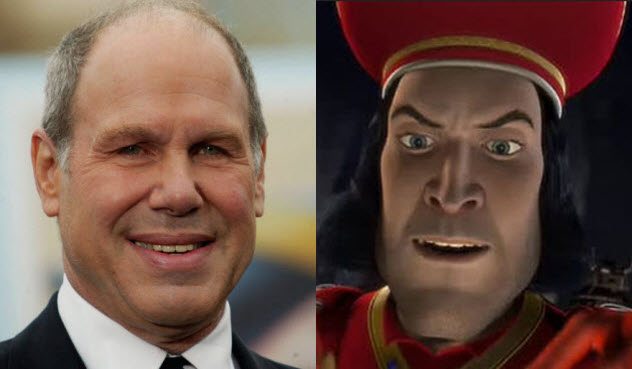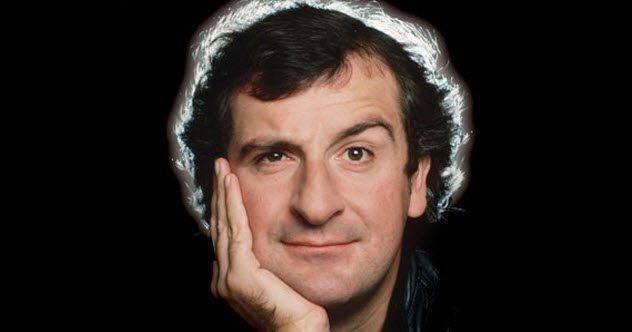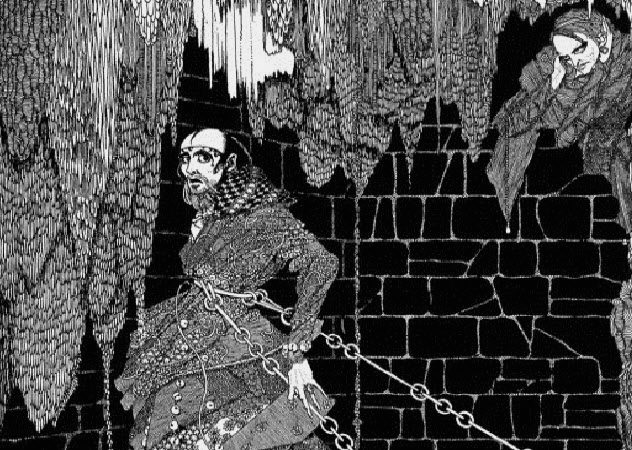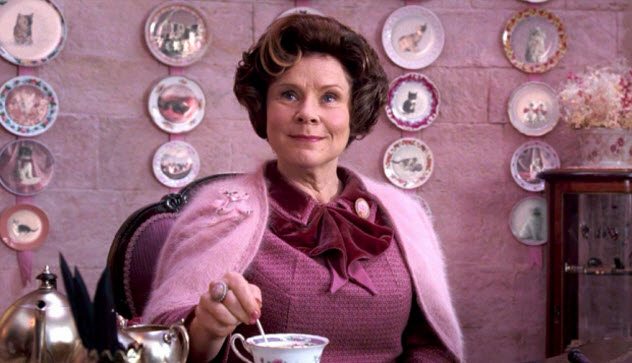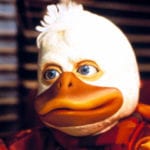Usually, though, we find ourselves unable to do anything about it and the feeling sort of fades away. This is where we differ from the creators of our favorite books, movies, and TV shows. Apparently, having an audience awakens all sorts of long-dormant hostilities, leading to the sneaky placement of insults in places you’d never suspect. Check out the following bizarre ways that the creative community surreptitiously slammed their enemies.
10 Shrek Goes Medieval On Disney
The 2001 animated film Shrek was a playful new take on the old hero-saves-princess formula. Aside from a few subtle naughty jokes slipped in for the adults, it was a pretty tame, kid-friendly affair. It certainly wasn’t the kind of thing that could secretly be a 90-minute rant about the creator’s old boss, right? Well, that’s actually a subject of some debate. The film’s creator, Jeffrey Katzenberg, had a vicious falling-out with his ex-mentor and Disney CEO Michael Eisner prior to the creation of the film. This led to a lengthy court case and no small amount of animosity between the pair. So when Katzenberg cofounded his own animation company, DreamWorks, many believe the temptation to slam his rival was too great to resist. This led to numerous thinly veiled insults scattered throughout the company’s massively successful Shrek. The villain of the story, Lord Farquaad, is believed to be a caricature of Eisner, a greedy tyrant who basically enslaves fairy-tale creatures for personal gain. His kingdom, Duloc, is quite obviously a sinister version of Disneyland, complete with costumed characters and puppets singing a spoof of “It’s a Small World, After All.”[1] And to top it off, Farquaad bears a suspicious resemblance to Eisner because Katzenberg apparently decided to swear off subtlety. None of this has been confirmed, of course, so you’ll have to decide for yourself. But we have to imagine that this is definitely something most people would do, given the opportunity.
9 Mark Twain Drowns His Enemy In Effigy
It turns out that Mark Twain, author of such beloved folksy classics as The Adventures of Tom Sawyer and The Adventures of Huckleberry Finn, had a bit of a sadistic side. Despite looking like someone’s kindly grandfather, he would absolutely destroy you if you crossed him. He would toss you down a river, slam you into the rocks, and drown you. Of course, this would all take place in a story. But still, it’s harsh. Outside of his books, Twain was actually quite the pacifist. In fact, his biggest complaint about his beloved American South was the glorification of violence in its culture. He felt that literature, particularly the works of Sir Walter Scott, perpetuated this ferocious fascination by reveling in warfare and other “romantic juvenilities.”[2] So, when penning The Adventures of Huckleberry Finn, Twain decided to let the world know exactly what he thought of Scott’s work. In the story, characters Huck and Jim see a wrecked steamboat in the Mississippi River, crashed against some rocks and doomed to crumble and sink. The vessel’s name was, of course, the Walter Scott. The implication was that the writer’s dated ideals had no place in the then-modern world and the South was destined to crumble because it was built upon them. Sure, it’s a bit tame as insults go, but at least, it’s got a little old-world charm. If the pair were alive today, we’d only be left with an oddly boat-themed Twitter feud.
8 Stephen King Immortalizes His Would-Be Killer’s Stupidity
It should come as no surprise that terror maestro Stephen King may have a bit of a vindictive streak—especially when he can expose an enemy’s weaknesses in front of an audience of millions. Needless to say, crossing King can be hazardous to one’s reputation. Just ask Bryan Smith. In June 1999, King was out for his usual walk when he happened upon Smith, the distracted driver of a large van. King was struck by the vehicle, receiving a large gash on his head, multiple broken bones, and a punctured lung. Despite causing the accident and several months of less-than-comfortable rehab for King, Smith went almost completely unpunished. Additionally, Smith, who had accumulated 11 convictions for speeding and DUI in the previous decade, refused to take any responsibility for the crash. So King pulled out his secret weapon. In the Dark Tower series, King saw fit to include the accident. Not a situation similar to the accident, mind you, but the actual accident. The protagonist finds himself on the exact road on which King was struck and saves King’s life within the story. It’s all a bit confusing, but the point is this: Bryan Smith played his role as the drunken, irresponsible driver of the infamous van. He appeared not only as an act of revenge but also because King could never quite escape the feeling that the bizarre Smith had somehow escaped from one of his stories.[3]
7 Superman’s Anti-Corporate Sermon
In 2013, the film Man of Steel gave Superman a dark, gritty makeover. Rather than the beaming Boy Scout that audiences were accustomed to, they were treated to a moody, sullen man more suited to the Batcave than the Fortress of Solitude. While many appreciated the refreshing new direction, others disapproved of the “selling out” of their hero. Including, many believe, All-Star Superman writer Grant Morrison. Morrison always portrayed Superman as the embodiment of every positive human trait. Therefore, he may have been a bit miffed at Man of Steel’s trendy, new “bad boy” image. This theory is supported by Morrison’s writing a long-winded and rather preachy anti-corporate story line into the Superman comic universe after the film’s release.[4] It involves a team of scientists attempting to create the most benevolent life-form possible. Lacking funding, they approach megacorporation Overcorp, which promptly takes complete control of the project and twists the scientists’ pure creation into the “violent, troubled, faceless antihero” Super-Doomsday. This “global marketing icon” even sports a swastika-like Superman emblem on its chest. All in all, it’s a bizarrely heavy-handed and out-of-place rant about corporate America in an otherwise cartoonish universe. Really makes one wonder.
6 The Hitchhiker’s Guide To Bullying Schoolmates
If you’ve read The Hitchhiker’s Guide to the Galaxy—and if not, do so immediately—there is a lengthy passage early on which you may have found a bit odd. That is, before immediately chalking it up to the overall oddness of the book and letting it go. In describing the poetry of an alien race known as the Vogons, author Douglas Adams refers to it as the third worst in the universe. The first, he informs us, is that of Paula Nancy Millstone Jennings of Earth. Except it didn’t always say Paula Nancy Millstone Jennings. Adams originally used the massive paragraph to set up a joke at an old school roommate’s expense. While sharing a room with one Paul Neil Milne Johnstone, Adams developed a special sort of hatred for the man’s poetry. “[Johnstone] kept me awake all night scratching this awful poetry about swans and stuff,” said Adams in an interview following the original radio broadcast of Hitchhiker’s, “and somebody asked me what the first worst [poetry] was, and I couldn’t think and I said, ‘Well, it’s Milne Johnstone, isn’t it?’ ” Adams liked that offhand remark so much that it eventually found its way into future productions of the story, including the novel. Until Johnstone threatened legal action, of course.[5] He didn’t particularly care for his poetry being described as worse than the fatal verses of the Azgoths of Kria, so Adams begrudgingly changed the name. Sort of.
5 Goldfinger’s Architectural Aggression
The third in the James Bond film series, Goldfinger saw the suave British agent going toe to toe with the eponymous villain, Auric Goldfinger. A greedy communist megalomaniac, Goldfinger attempts to steal the gold at Fort Knox for the Soviet Union. He’s a cartoonish character with an even more cartoonish name. Strange, then, that he was named for a real person. Hungarian architect Erno Goldfinger found his way into Ian Fleming’s world-famous tale of espionage after, of all things, a design dispute. Fleming spent a great deal of his life in Hampstead, England, and it had won the author’s heart with its old-world quaintness. So when Goldfinger proposed demolishing the charming burg in favor of tower blocks done in his particular soulless concrete style, Fleming found the inspiration for his latest literary villain. Fleming took all of the real Goldfinger’s traits and exaggerated them to Bond-villain levels. Most importantly, Fleming altered the real Goldfinger’s obsession with turning everything into concrete into the fictitious Goldfinger’s penchant for gold. Obviously, the real Goldfinger was less than thrilled and threatened legal action. So Fleming offered to change the name to Goldprick—seriously—before the publisher decided instead to just insert a lot of “all characters are fictitious” disclaimers into the book and future film adaptation.[6]
4 Edgar Allan Poe’s Revenge Fantasy
Aside from “The Raven,” “The Cask of Amontillado” may well be Edgar Allan Poe’s most famous work, and it is definitely among his darkest. As you may recall from lit class, the tale focuses on the scheming Montresor’s revenge against the insulting Fortunato. After suffering countless insults at the hands of his supposed friend, Montresor lures Fortunato into an old cellar with promises of fine wine. Montresor then chains Fortunato to a wall, seals the entrance, and leaves him to die alone in the darkness. What you may not know, however, is that “Fortunato” was really Poe’s literary rival Thomas Dunn English. The two had once been friends. But a bitter feud tore them apart, leading to English’s insulting portrayal of Poe in his work 1844. In the tale, an alcoholic writer by the name of Marmaduke Hammerhead gets famous by writing a story called “The Black Crow” before going crazy and ending up in an asylum. Poe saw the obvious parallels and went to work on his revenge. In “Cask,” Poe sarcastically uses quotes from 1844 and even sets the climactic scene in a cellar, one of the key locations in English’s story. The two men in the story were once friends until one began insulting the other. And in case that’s not enough to convince you, the motto of Montresor’s family is Nemo me impune lacesit (“No one insults me with impunity”).[7] Who’d have thought the darkest author in history would have a sick sense of justice?
3 Harry Potter’s Pretty Pink Put-Down
Despite being marketed mainly to children, the Harry Potter series has no shortage of violence, death, and genuinely evil characters. Aside from the villainous Lord Voldemort, plenty of supposedly “good” characters seem more than willing to step up to the role of antagonist, including the sadistically sugary Dolores Umbridge. This pink-clad nightmare spends most of the fifth novel building a totalitarian regime and casually torturing schoolchildren. None of the series’ pseudo-villains are more reviled than she. And author J.K. Rowling agrees. In a recent interview, Rowling says that Umbridge is “one of the characters for whom I feel the purest dislike.” It’s interesting, then, that Rowling goes on to admit that the character was based on a teacher she once had. This person was “disliked intensely on sight” and “returned [Rowling’s] antipathy with interest.” The author also described a telling parallel between the two insidious instructors—their interest in cutesy accessories “appropriate to a girl of three.”[8] Unfortunately, Rowling never names the person in question. But we have to imagine that she’ll look up from her kitten-themed stationery long enough to get the message.
2 Alfred Hitchcock Demonizes A Hated Producer
In 1954, Alfred Hitchcock gave the world the classic thriller Rear Window. The film tells the story of a wheelchair-bound photographer who kills time by spying on his neighbors. All goes well until he witnesses a murder and tries to solve the crime, eventually confronting the terrifying killer. It was an exciting finale, but producer David O. Selznick may have been a bit more riled up by it than most. Hitchcock and Selznick had worked together on a few projects, like Rebecca and The Paradine Case, and had grown to hate one another. They would constantly argue over artistic choices and Selznick’s meddling with Hitchcock’s storytelling. Needless to say, Hitchcock severed ties with the producer as soon as his contract was up and went on to solo stardom with films like The Birds and Psycho. However, he never forgot his torturous time with Selznick and decided to very publicly share his opinion of the man. When the time came to cast Rear Window, actor Raymond Burr was chosen for the role of the murderer, supposedly for his voice. The thing is, he had very few lines of dialogue. This led many to believe that the decision was actually made because of Burr’s remarkable resemblance to Selznick. He was even given identical glasses to complete the doppelganger effect.[9] The likeness is so impressive that it’s amazing no lawsuit was filed.
1 Sneaky Sabotage On Homeland
Showtime’s hit series Homeland follows a CIA agent’s attempts to defuse terrorist threats to the United States. It has enjoyed great praise, but it has also accumulated a number of critics. Accused of being everything from ignorant to outright racist in its depictions of Middle Eastern culture, the show definitely has its enemies. And some of those enemies just so happen to work on the show itself. When the producers decided to decorate their set with Arabic graffiti, they contacted a few well-known graffiti artists. Despite disagreeing with the show’s politics, these artists recognized a unique opportunity and immediately agreed to work on the sets. Realizing that very few members of the production team could actually read Arabic, they came up with a fairly straightforward plan: Paint as many surfaces as possible with declarations of the racism of the show. Which they did. They tagged wall after wall with phrases ranging from the subtle “Homeland is NOT a series” to the blunter “Homeland is racist.” The best part is that no one bothered to check any of this before the episode aired. It only became clear afterward when the incident immediately became a media sensation. The artists insist that this wasn’t a hateful act; they simply wanted to start a conversation on racism.[10] Either way, it was a brilliant plan. After all, what better way to bash a show than on the show itself?
